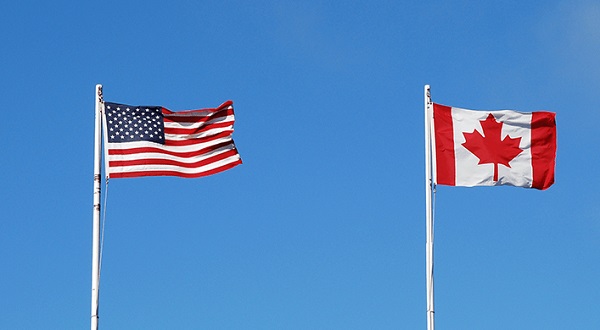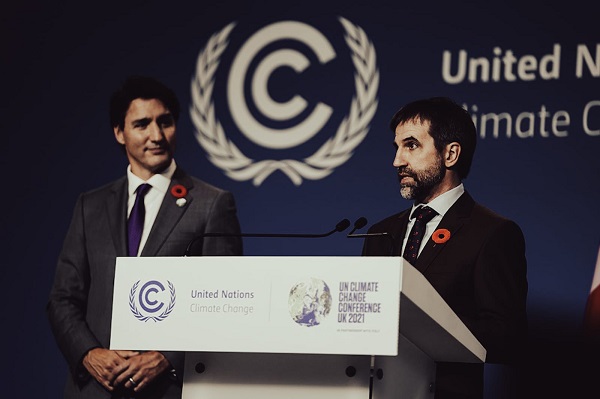Agriculture
While Europeans Vacation, Denmark Attacks Livestock Farmers With Cow Tax

From Heartland Daily News
By Andrew Weiss
Economics aside, this policy will have no effect on global temperatures. Even if the entire European Union halted all emissions (including livestock) the global temperatures would be reduced by only 0.12 degrees Celsius by the year 2100, assuming the highest climate sensitivity to carbon.
As Europeans generate greenhouse gas emissions by driving or flying off on their long summer holidays, Denmark is trying to lower those emissions by taxing cow burps and flatulence to combat climate change.
The Danish government believes that taxing methane produced by animals will improve the lives of citizens by lowering global temperatures. Therefore, beginning in 2030, livestock farmers will be taxed $17 per ton of carbon dioxide-equivalent emitted by their livestock. That tax will increase to $43 by 2035.
The average cow emits the CO2 equivalent of about three tons per year in methane, so each cow will cost farmers $50 in 2030, reaching about $125 by 2035.
Other livestock such as sheep and pigs are also subject to the methane tax, but they emit less methane because of differences in the chemistry of their digestive systems.
But two professors—William A. van Wijngaarden of York University in Canada and William Happer of Princeton University—argue that restrictions on methane emissions are “not justified by facts.”
CO2 currently makes up about 420 ppm (parts per million), which is 0.042% of the atmosphere. Methane is a much lower 1.9 ppm, or about 0.0002% of the atmosphere.
Methane is increasing in the atmosphere at a rate of about 0.0076 ppm per year, while CO2 is increasing at a rate 300 times faster, or 2.3 ppm a year.
The methane molecule is about 30 times better at trapping heat than the carbon dioxide molecule. Therefore, methane contributes about one-tenth the warming of CO2.
Effect on the Economy
Denmark’s new animal tax will raise food prices. Prices for beef and milk will go up, percolating throughout the nation’s economy. Denmark’s economy contracted 1.8% last quarter and the inflation rate is 2.1%, but expect to see inflation increase with the new animal tax. The tax will disproportionately affect middle-income earners and the poor.
At the same time, farmers will see smaller profit margins. Some farmers will reduce their numbers of cows and shift to other animals or grain. Others might sell their farms and change occupations.
In America, the majority of beef farms are run by small operations. According to the U.S. Department of Agriculture, 54% of farms with beef cattle had fewer than 20 cows. On such a farm, raising a cow costs about $900 per year.
A U.S. methane tax identical to Denmark’s would be the same as an additional 15% tax on cattle. This would be devastating to small ranchers who are already pinched by increased overhead costs.
The Danish policy taxes carbon at $43 per ton. This so-called social cost of carbon is priced even higher here in America, and is an easily manipulated price tag that the government puts on carbon emissions.
Last fall, the U.S. Environmental Protection Agency proposed $190 per ton as the social cost of carbon to make its policies seem worth the regulatory burden. If taxed at this price level, a 20-cow operation would owe Uncle Sam an additional $11,000 per year.
Effect on Carbon Emissions
All 1.5 million cows in Denmark account for about 0.1% of the European Union’s annual 3.6 billion tons of greenhouse emissions.
The chart below compares greenhouse gas emissions by Danish cattle to emissions in all of Denmark and in the entire European Union.

When it comes to the atmospheric concentration of carbon dioxide, CO2 emitted in Denmark is no different than CO2 emitted anywhere else in the world.
If Danish lawmakers are concerned about CO2-caused climate change, the cost of the tax policy needs to be weighed against the global effect on emissions.
In 2022, India emitted 189 million metric tons more than it did in 2021. This is more than four times the entire carbon footprint of Denmark.
Effect on Global Climate
Economics aside, this policy will have no effect on global temperatures. Even if the entire European Union halted all emissions (including livestock) the global temperatures would be reduced by only 0.12 degrees Celsius by the year 2100, assuming the highest climate sensitivity to carbon.

These numbers are calculated using The Heritage Foundation’s climate calculator, which uses a government climate model. (You can use the calculator for yourself here.)
From Denmark to California
Although such policies may seem unlikely to take hold in freedom-loving America, similarly intrusive regulations already have been implemented across multiple sectors. These regulations affect everything in the U.S. from large-scale power plants and the automotive industry to everyday household items such as gas stoves, water heaters, and lawn equipment.
In some states, including New York and California, building codes now prohibit gas hookups in many new construction projects, denying residents the right to decide for themselves what energy sources to use.
As of Jan. 1, it became illegal to buy gas-powered lawn equipment such as lawnmowers, leaf blowers, or chainsaws in California. This law will cost landscaping businesses over $1 billion and raise the price of landscaping services, causing some to lose their jobs and business closures.
It is time to stop perpetuating the fairy tale that taxing cow burps will reduce global temperatures. Such regulations only increase food costs and inflation in general, making poverty even worse.
Andrew Weiss is a research assistant for domestic policy at The Heritage Foundation.
Originally published by The Daily Signal. Republished with permission.
Agriculture
Restoring balance between renewable energy, agricultural land and Alberta’s iconic viewscapes

Alberta is known around the world for many things – some of the most breathtaking and iconic scenery on earth, a world-class agricultural industry that puts high-quality food on tables across the globe and a rich history of responsible energy development. Alberta is a destination of choice for millions of visitors, newcomers and investors each year.
To ensure Alberta’s continued prosperity, it is imperative that future energy development is balanced with environmental stewardship, protecting Albertans’ ability to use and enjoy their property, and safeguarding agriculture for continued food security.
Alberta’s renewable energy sector has grown rapidly over the past decade, yet the rules to ensure responsible development have not kept up. As a result, municipalities, agricultural producers and landowners across the province raised concerns. Alberta’s government is fulfilling its duty to put Albertans first and restore the balance needed for long-term success by setting a clear path forward for responsible renewable energy development.
“We are doing the hard work necessary to ensure future generations can continue to enjoy the same Alberta that we know and love. By conserving our environment, agricultural lands and beautiful viewscapes, our government is protecting and balancing Alberta’s long-term economic prosperity. Our government will not apologize for putting Albertans ahead of corporate interests.”
Amendments to the Activities Designation Regulation and Conservation and Reclamation Regulation provide clarity for renewable energy developers on new and existing environmental protections.
These changes will create consistent reclamation requirements across all forms of renewable energy operations, including a mandatory reclamation security requirement. Albertans expect renewable power generation projects to be responsibly decommissioned and reclaimed for future generations. Alberta’s government stands firm in its commitment to protect landowners and taxpayers from being burdened with reclamation costs.
“We want to protect landowners, municipalities and taxpayers from unfairly having to cover the costs of renewable energy reclamations in the future. These changes will help make sure that all renewable energy projects provide reasonable security up front and that land will be reclaimed for future generations.”
Alberta’s government committed to an ‘agriculture first’ approach for future development, safeguarding the province’s native grasslands, irrigable and productive lands. The protection of agricultural land is not only essential to food production, but to environmental stewardship and local wildlife protection.
The Electric Energy Land Use and Visual Assessment Regulation follows this ‘agriculture first’ approach and enhances protections for municipalities’ most productive lands, establishing the need to consider potential irrigability and whether projects can co-exist with agricultural operations. These changes are critical to minimizing the impacts of energy development on agricultural lands, protecting local ecosystems and global food security. With these new rules, Alberta’s farmers and ranchers can continue to produce the high-quality products that they are renowned for.
“Our province accounts for nearly 50 per cent of Canada’s cattle, produces the most potatoes in the country, and is the sugar beet capital of Canada. None of this would be possible without the valuable, productive farmland that these new rules protect. Understanding the need for an ‘agriculture first’ approach for energy development is as simple as no farms, no food.”
The new Electric Energy Land Use and Visual Assessment Regulation also establishes specific guidelines to prevent projects from impacting pristine viewscapes. By establishing buffer zones and visual impact assessment zones, Alberta’s government is ensuring that industrial power projects the size of the Calgary Tower cannot be built in front of UNESCO World Heritage sites and other specified viewscapes, which will support the continued growth and success of Alberta’s tourism sector.
As Alberta’s population and economy grows, it is critical that the province has the additional power generation needed to meet increasing demand. Power generation must be developed in a balanced and responsible manner that promotes environmental stewardship, ensures the continued enjoyment of Alberta’s beautiful landscapes, and safeguards food security by protecting Alberta’s valuable agricultural lands. By encouraging the responsible development of additional power generation with these new regulations, Alberta’s government is listening to Albertans and ensuring the electricity grid is affordable, reliable and sustainable for generations to come.
Summary of Policy Changes
Following the policy direction established on February 28, 2024, Alberta’s government is now implementing the following policy and regulatory changes for renewable power development:
Agricultural lands
The new Electric Energy Land Use and Visual Assessment Regulation takes an “agriculture first” approach.
• Renewable energy developments will no longer be permitted on Land Suitability Rating System (LSRS) Class 1 and 2 lands unless the proponent can demonstrate the ability for both crops and/or livestock to coexist with the renewable generation project,
• In municipalities without Class 1 or 2 lands, Class 3 lands will be treated as Class 1 and 2.
• An irrigability assessment must be conducted by proponents and considered by the AUC.
Reclamation security
Amendments to the Activities Designation Regulation and Conservation and Reclamation Regulation create consistent reclamation requirements across all forms of renewable energy operations, including a mandatory reclamation security requirement. There will be a mandatory security requirement for projects located on private lands.
• Developers will be responsible for reclamation costs via a mandatory security or bond.
• The reclamation security will either be provided directly to the province or may be negotiated with landowners if sufficient evidence is provided to the AUC.
Viewscapes
The Electric Energy Land Use and Visual Assessment Regulation ensures pristine viewscapes are conserved through the establishment of buffer zones and visual impact assessment zones as designated by the province.
• New wind projects will no longer be permitted within specified buffer zones.
o Other proposed electricity developments located within the buffer zones will be required to submit a
visual impact assessment before approval.
• All proposed electricity developments located within visual impact assessment zones will be required to submit a visual impact assessment before approval.
Municipalities
The AUC is implementing rule changes to:
• Automatically grant municipalities the right to participate in AUC hearings.
• Enable municipalities to be eligible to request cost recovery for participation and review.
• Allow municipalities to review rules related to municipal submission requirements while clarifying consultation requirements.
Agriculture
Saskatchewan potash vital for world food
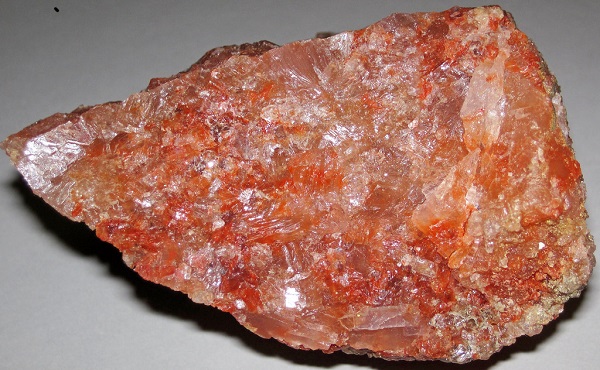
From Resource Works
Fertilizer Canada says the fertilizer industry contributes $23 billion a year to Canada’s economy and provides over 76,000 jobs.
A small potash extraction company in Manitoba calls Saskatchewan “the Niagara Falls of potash in Canada.”
The current 10 mines in Saskatchewan produced around 13 million tonnes in 2023, accounting for some 33% of global potash production, and exported 95% of it to more than 75 countries.
Potash mine No. 11 in Saskatchewan is working toward production in late 2026. That’s the $14-billion Jansen mine, owned by BHP, located 140 kilometres east of Saskatoon. It aims to produce around 8.5 million tonnes a year to start, and as much as 16–17 million tonnes a year in future stages.
With potash used primarily in agricultural fertilizers, Saskatchewan’s output is a key ingredient in global food security. Fertilizer is responsible for half of the world’s current food production.
As Real Agriculture points out: “Fertilizer production is not only an economic driver in Canada, but it is also a critical resource for customers around the world, especially in the United States.”
This is particularly important as Russia’s war on Ukraine has raised doubts about reliable supplies of potash from Russia, the world’s No. 2 producer, which produced 6.5 million tonnes in 2023.
In fertilizers, the potassium from potash increases plant growth and crop yields, strengthens roots, improves plants’ water efficiency, and increases pest and disease resistance. It improves the colour, texture, and taste of food. Natural Resources Canada adds: “Potassium is an essential element of the human diet, required for the growth and maintenance of tissues, muscles and organs, as well as the electrical activity of the heart.”
Canada’s federal government has included potash as one of 34 minerals and metals on its list of critical minerals.
Fertilizer Canada says the fertilizer industry contributes $23 billion a year to Canada’s economy and provides over 76,000 jobs.
The potash operations in Saskatchewan are in the Prairie Evaporite Deposit, the world’s largest known potash deposit, formed some 400 million years ago as an ancient inland sea evaporated. The deposits extend from central to south-central Saskatchewan into Manitoba and northern North Dakota. These deposits form the world’s largest potash reserves, at 1.1 billion tonnes.
Manitoba’s first potash mine is close to bringing its product to market. The PADCOM mine is 16 kilometres west of Russell, Manitoba, near the Manitoba-Saskatchewan border. The Gambler First Nation has acquired a one-fifth stake in the project.
PADCOM injects a heated mixture of water and salt underground to dissolve the potash, which is then pumped to the surface and crystallized. CEO Brian Clifford says this process is friendlier to the environment than the conventional method of mining underground and extracting ore from rock deposits.
Saskatchewan’s northern potash deposits are about 1,000 metres below the surface and are extracted using conventional mining techniques. To the south, deposits are anywhere from 1,500 to 2,400 metres deep and are mined using solution techniques.
PADCOM aims to produce 100,000 tonnes of potash per year, eventually growing to 250,000 tonnes per year. However, PADCOM president Daymon Guillas notes that across the Manitoba-Saskatchewan border, the Nutrien potash mine near Rocanville, Saskatchewan, produces five to seven million tonnes per year.
“In 36 hours, they produce more than we do in a year. Saskatchewan is the Niagara Falls of potash in Canada. Our little project is a drip, just a small drip out of the faucet.”
(New Brunswick once had a small potash mine, but it closed in 2016.)
Real Agriculture says: “Canadian-produced potash remains vital to the U.S.’s ability to produce enough corn for feed, ethanol production, and export requirements, at a time when the U.S. heightens its focus on reducing exposure to international integrated supply chains in favour of U.S. domestic supply chains.”
Writer Shaun Haney continues: “For the U.S. corn farmer, Canadian-produced potash is critical for achieving the top yields. According to StoneX, over the past three years, Canada accounts for roughly 87 per cent of potash imports by the U.S., while Russia sits at 9.5%.”
-

 COVID-192 days ago
COVID-192 days agoVerdict for Freedom Convoy leaders Tamara Lich and Chris Barber coming next spring
-

 National2 days ago
National2 days agoTrudeau government bans even more guns, wants to send them to Ukraine
-
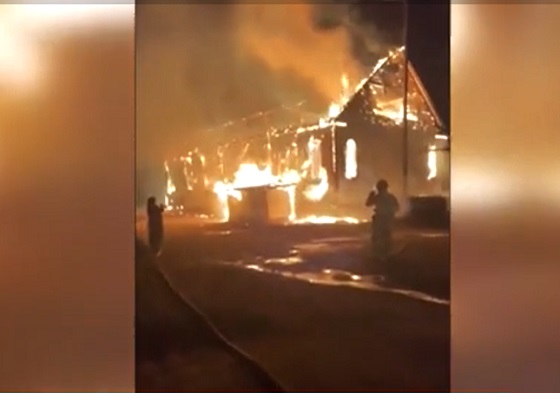
 National2 days ago
National2 days agoJD Vance sounds alarm over slew of Canadian church burnings: ‘Anti-Christian bigotry’
-

 Christopher Rufo1 day ago
Christopher Rufo1 day agoAmerica’s Verdict
-
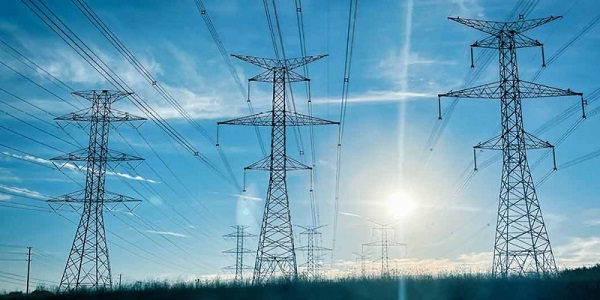
 Alberta1 day ago
Alberta1 day agoProvince “rewiring” Alberta’s electricity grid for growth
-

 Censorship Industrial Complex2 days ago
Censorship Industrial Complex2 days agoBiden admin used banks to spy on Americans’ financial data, targeted Trump supporters: House report
-

 International1 day ago
International1 day agoRussiagate Remnants
-

 COVID-191 day ago
COVID-191 day agoIs FDA ‘covering for Pfizer’? Court orders agency to release a million more pages of COVID vaccines documents


